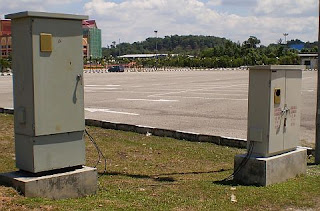Picture 1 – Wrongly designed feeder pillar??

================ RELATED ARTICLES: Electric Cable Drum Pictures | Underground street light cables | Compound lighting storage yard | Feeder pillar single line diagram | Bollard light pictures | Compound Lighting Installation Pictures | Compound lighting foundation size | Electrical installation pictures | Architectural Lighting
================
I always avoid criticizing other people’s electrical designs based on evidence that is seen after installation has been completed because the outcome of a completed electrical installation is the products of many variables and factors.
Especially with the popularity of design-and-build and turnkeys types of contracts.
In these types of contracts, the main contractor is the boss and the employer of the professional consultants.
How professional can a consultant-engineer be when his paymaster is the main contractor?
Now let us get back to the picture above.
I do not know if the above electrical feeder pillars were constructed in a turnkey contract or not. I only passed by the area to find a place to eat.
However, the sight of these lovely feeder pillars caught my attention while I was looking for a parking space.
What is wrong with these feeder pillars?
I am not talking about age of the feeder pillars.
I know that everything gets old some day. Machines get worn out, the materials get deteriorated and the lovely paintwork fades out.
They do get old, just like us.
However, machines and equipment that can endanger people especially children should be designed and installed with safety as the most important criteria.
The feeder pillars above have failed in that respect. Look at Picture 2 below.
Picture 2 – Inadequate protection against electric shocks

Here you can see a hole at the feeder pillar front door.
The brownish rectangular material at the feeder pillar front door can only mean one thing: there is a kilowatt-hour (KWh) meter inside it.
The brownish material used to be a transparent material so someone could read the reading of the energy meter.
It is a usual practice to install a separate meter for the lighting of public spaces at a private compound because the owner or the property management could apply for a lower tariff on the electricity used by the carpark lights or road lights.
The feeder pillar that supplies the public lighting is where the authority KWh meter is installed.
At many installations, the design of these feeder pillars as shown in the above pictures should be adequate. It is actually one of the standard designs and therefore this design is widely used.
However, these particular feeder pillars were installed at open public spaces with open to public carpark and a number of recreational spots nearby.
In other words, now and then this place is crowded with children.
The design of the feeder pillars as installed here in the picture is wrong and dangerous
How should it be designed?
I will post a diagram of how it should be in another post. Maybe a picture or two of actual installations if I can steal a few hours to go take the pictures.
For now let me just point out a few points:
1: the front doors of the feeder pillars should be done in two layers, both having sufficient weatherproofing qualities.
The inside door protects the components inside the feeder pillar. The kilowatt-hour meter can also be installed behind this inner door.
If that is the choice, then a waterproofed viewing glass window needs to be provided at the inner door, and it should be at close distance to the meter dial.
The second layer of the feeder pillar door is the outer door. This door also has a glass-viewing window (the second layer of glass windows) directly in front of the inner viewing window.
The primary purpose of the outer door is to serve as an outer barricade against access to live parts if the outer viewing glass gets broken for whatever reason. Because of that, it is preferable if sufficient gap is provided between the outer and the inner doors. This will result in a more effective barricade.
2: The viewing windows for the kilowatt-hour meters should be of the correct materials.
Every time I looked at the feeder pillars in the above pictures, I always wonder about the cause of the damaged viewing windows.
Was it vandalism?
Or maybe it was the employees of the electricity supply company who broke the viewing window? With the windows turning so brownish, how could the “meter readers” (this is what we call the public utility workers who come to read the electricity meters and issue the bills for the month) read the readings?
But then the viewing window of the second feeder pillar was not broken. Maybe the door of this one was not locked so there was no need to break it.
It does not matter who did it. When it comes to safety of the members of the public especially children, the design and installation people in electrical installation works should ensure that the completed works is adequately safe.
Why do I put so much emphasize on children?
Because they are curious little creatures.
When they see holes like one in Picture 2 above, someday one of them may be tempted to put his hand inside.
Enough said.
I will see you again in the next post.
Copyright http://electricalinstallationwiringpicture.blogspot.com Feeder pillar hazard pictures
No comments:
Post a Comment